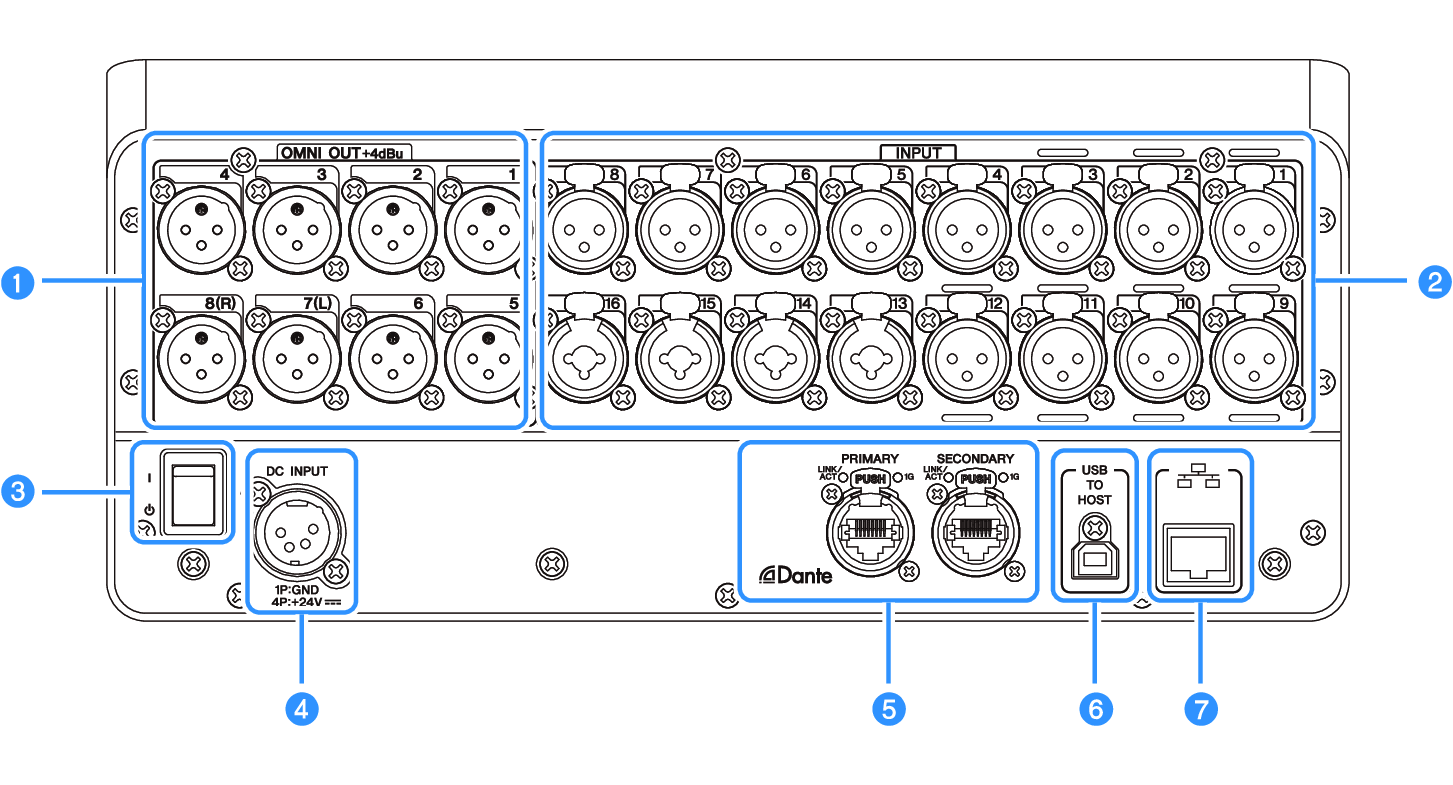Rear panel
Following is an explanation of the functions and names of parts of the rear panel of the DM3 Series.

a | [OMNI OUT] jacks XLR-3-32 type output jacks for outputting analog audio signals. These jacks are primarily for outputting MIX channels and STEREO channels. |
b | [INPUT] jacks Connects to devices like mikes and musical instruments.
|
c | Power switch When the switch is on (|), the power turns ON. When the switch is on (z), the power goes to standby. NOTICE
|
d | [DC INPUT] connector For connecting to the included power adapter. First connect this device to the power adapter and then plug it into the electrical outlet.
|
e | Dante PRIMARY/SECONDARY connectors (DM3 only) These connectors are for Dante audio network connections, such as I/O devices like the Tio1608-D. The connectors to use are RJ-45 connectors that conform to etherCON CAT5e, made by Neutrik. NOTICE
*EEE (Energy Efficient Ethernet) function: A technology that reduces power consumption of an Ethernet device when network traffic is sparse. It is also called “green Ethernet” or IEEE802.3az. |
f | [USB TO HOST] connector USB Type B Connector The product functions as an up to 18 IN/18 OUT, 96 kHz/32-bit audio interface by connecting to a computer via USB cables. It also allows control of DM3 series and remote control of DAW software by USB-MIDI. It is necessary to install Yamaha Steinberg USB Driver in order to communicate with a computer. NOTICE
|
g | Network Connector This is an RJ-45 connector for connecting to a computer. Use an ethernet cable (CAT5e or better recommended). NOTICE
|



 WARNING
WARNING DM3 Series
DM3 Series